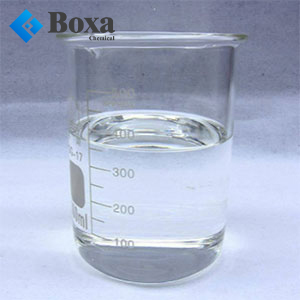What is Dimethyl Carbonate used for?
1. It can replaces phosgene as carbonylating agent
Although phosgene has high reactivity, its highly toxic and highly corrosive by-products make it
face huge environmental pressure, so it will be gradually eliminated; and DMC has a similar
nucleophilic reaction center. When the carbonyl of DMC is subjected to nucleophilic When attacking,
the acyl-oxygen bond is broken to form a carbonyl compound, and the by-product is methanol, so DMC
can replace phosgene as a safe reaction reagent to synthesize carbonic acid derivatives, such as
carbamate pesticides, polycarbonate, isocyanate, etc. Among them, polycarbonate will be the field
with the largest demand for DMC. It is predicted that more than 80% of DMC will be used in the
production of polycarbonate in 2005.
2. This product replaces dimethyl sulfate as a methylating agent
Due to similar reasons to phosgene, dimethyl sulfate is also facing pressure to be eliminated, and
when the methyl carbon of DMC is attacked by nucleophiles, its alkyl-oxygen bond is broken, and
methylated products are also generated, and using DMC ratio The reaction yield of dimethyl sulfate
is higher and the process is simpler. The main uses include the synthesis of organic intermediates,
pharmaceutical products, pesticide products, etc.
3. It is used as a low toxicity solvent
DMC has excellent solubility, narrow range of melting and boiling points, high surface tension, low
viscosity, small dielectric constant, high evaporation temperature and fast evaporation speed, so it
can be used as a low-toxic solvent for coatings Industrial and pharmaceutical sectors. It can be
seen that DMC not only has low toxicity, but also has the characteristics of high flash point, low
vapor pressure and high lower explosion limit in air, so it is a green solvent integrating
cleanliness and safety.
How about the storage and transportation?
Precautions for storage: flammable, its vapor mixed with air can form an explosive mixture, store in
a cool, dry, well-ventilated non-combustible warehouse. Keep away from fire and heat sources.
Storage temperature should not exceed 37°C. Keep container tightly closed. It should be stored
separately from oxidants, reducing agents, acids, etc., and should not be mixed. Explosion-proof
lighting and ventilation facilities are adopted. Prohibit the use of mechanical equipment and tools
that are prone to sparks. The storage area should be equipped with leakage emergency treatment
equipment and suitable containment materials.
Transportation precautions: Packing and marking flammable liquids Packaging method: ordinary wooden
box outside the ampoule; glass bottle with screw top, glass bottle with crimped iron cap, plastic
bottle or metal barrel (can). When transporting in ordinary wooden boxes, the transport vehicles
should be equipped with corresponding types and quantities of fire-fighting equipment and leakage
emergency treatment equipment. It is best to transport in the morning and evening in summer. The
tank (tank) truck used for transportation should have a grounding chain, and a hole partition can be
set in the tank to reduce static electricity generated by vibration. It is strictly forbidden to mix
and transport with oxidizing agents, reducing agents, acids, food chemicals, etc. During
transportation, it should be protected from sun exposure, rain and high temperature. Stay away from
fire, heat sources, and high-temperature areas during stopovers. The exhaust pipe of the vehicle
carrying this item must be equipped with a fire arresting device.






